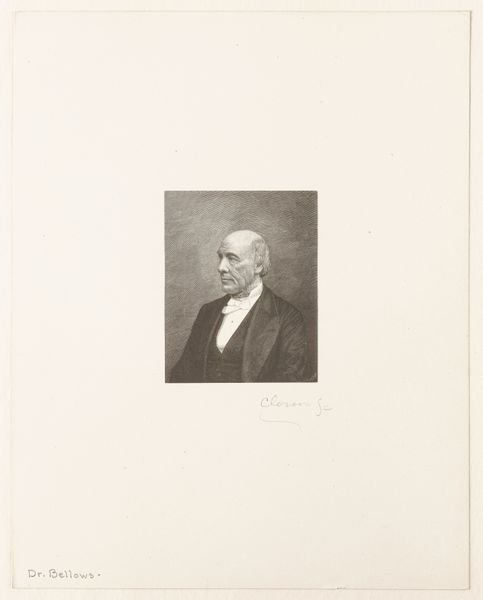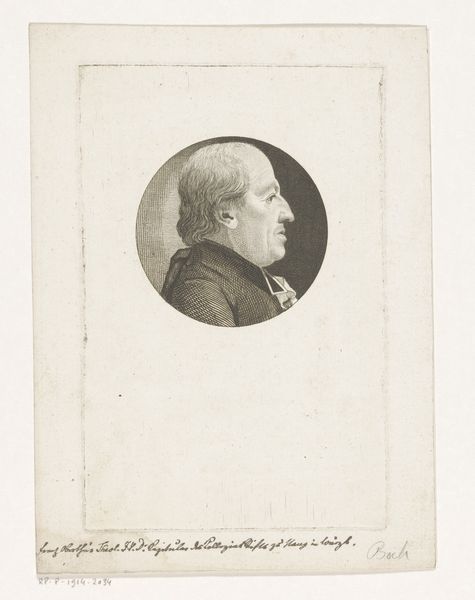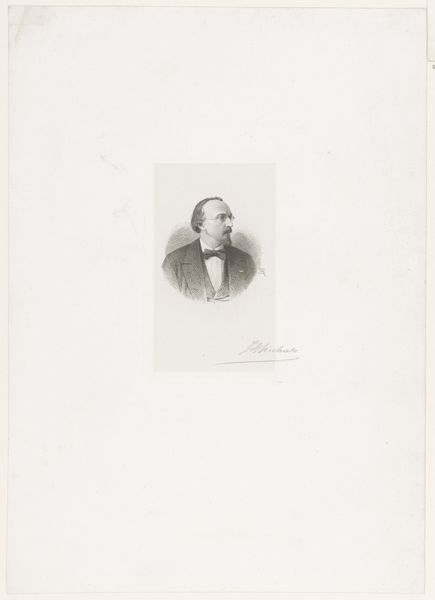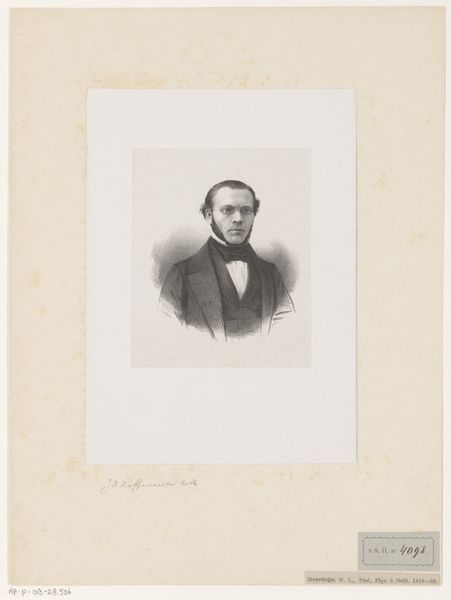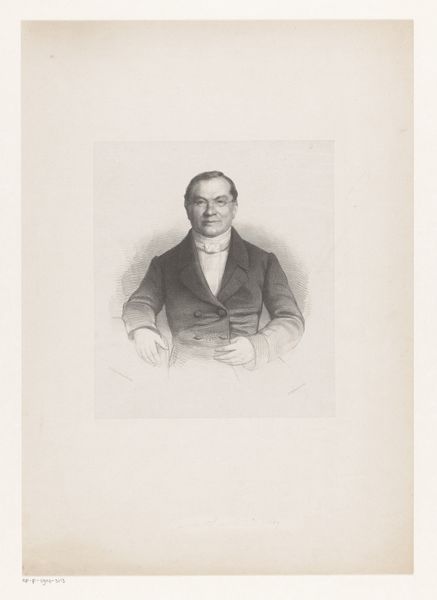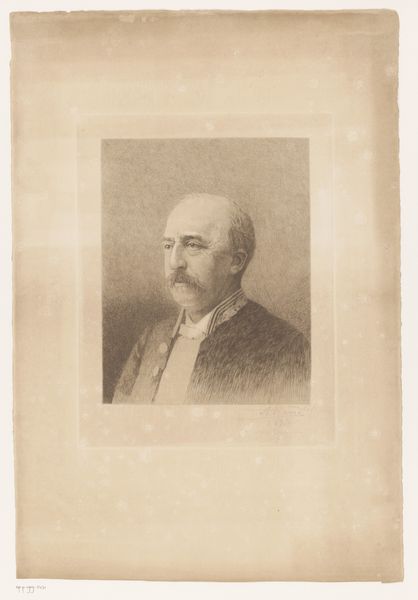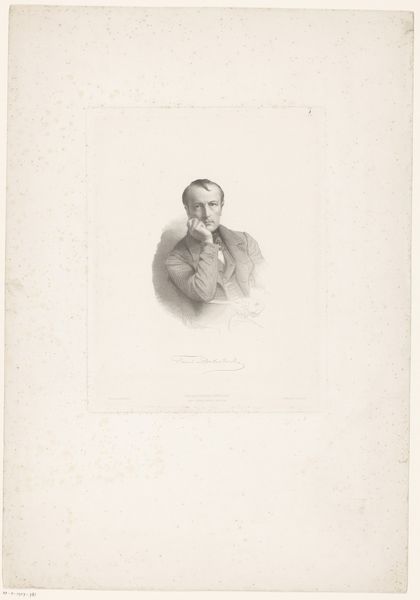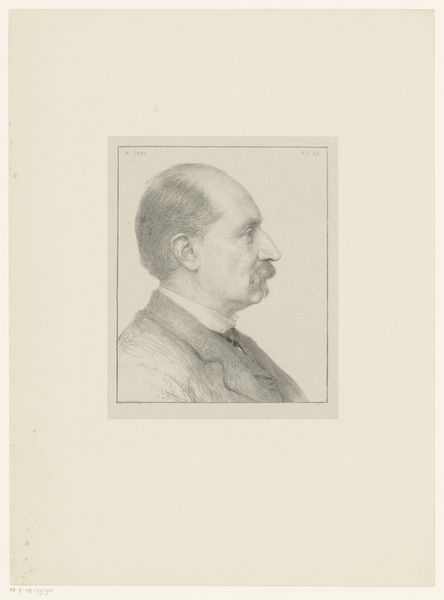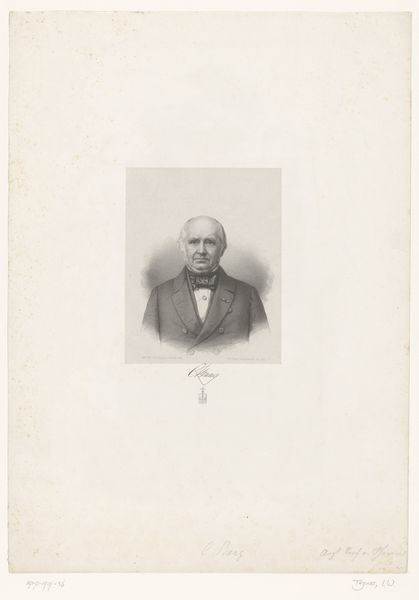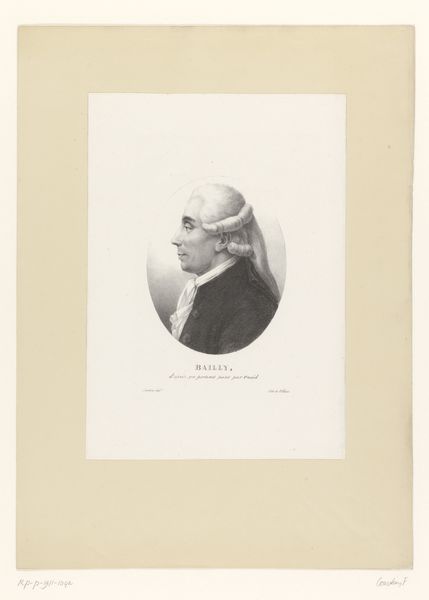
#
pencil drawn
#
photo of handprinted image
#
aged paper
#
toned paper
#
light pencil work
#
photo restoration
#
ink paper printed
#
pencil sketch
#
watercolour illustration
#
watercolor
Dimensions: 7 15/16 x 5 3/4
Copyright: Public Domain
Curator: Let’s consider this portrait by Hill and Adamson, titled "Henry Reeve," created between 1843 and 1847. Editor: Immediately, I'm struck by how much it looks like a sketch— the almost painterly quality achieved through photography. Curator: Well, the calotype process yielded results unlike anything else at the time. This soft focus, the way light interacts with the fibers of the paper...It was quite novel compared to, say, the crisp detail of a daguerreotype. Editor: It makes you think about the paper stock used, doesn’t it? How the texture probably influenced the distribution of chemicals, and consequently, the final image. And what does it tell us about the industrialization of photography materials at that time? Curator: Certainly. It's not just about materials, but access. Reeve, the sitter, clearly held a position that allowed for commissioning such a portrait, linking it directly to questions of social status. The clothing, the cane - props to enhance perceived value. Editor: Absolutely. Think of the labour involved! Preparing the paper, setting up the shot, processing – all far from the push-button photography we know. What level of knowledge about chemistry, optics, and art was expected of photographers in this period? This image highlights photography's intersection of science, art, and craft. Curator: True. Beyond skill, consider Hill and Adamson's studio practices and social networks. The Scottish art scene was rapidly changing. Studios became important places for cementing new photographic identities and markets. Editor: That reminds me to appreciate it in the current moment, since its preservation involves specialized labor now too! But given the materials themselves, it's astonishing how vivid and nuanced the details remain. It reminds me of the way that hand labor gives any item its soul, and creates such beautiful aging over time. Curator: A fantastic image indeed; it reveals much about artistic creation, industrial production, and cultural standing of 1840s Britain. Editor: I concur. It's an object that opens numerous avenues to understanding material culture, not just capturing it.
Comments
No comments
Be the first to comment and join the conversation on the ultimate creative platform.
